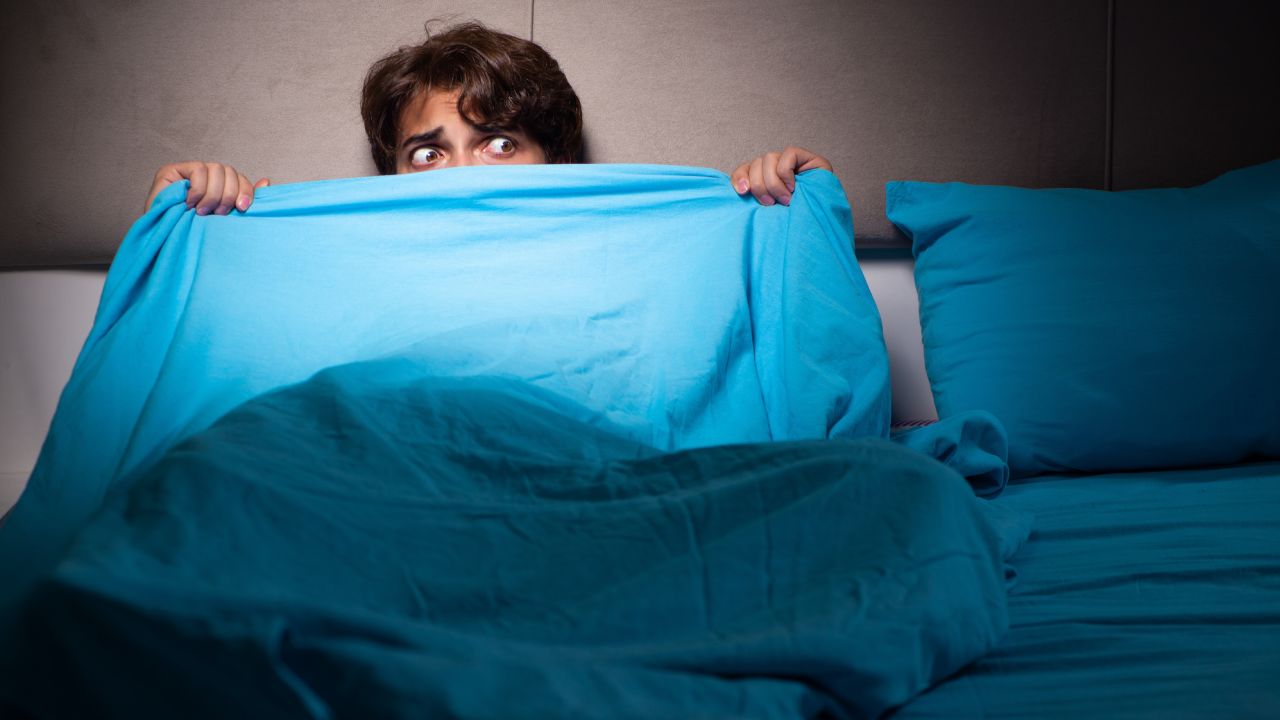
 i_need_contribute
i_need_contribute

Nightmare disorder is a sleep condition that affects about 4% of adults, the American Academy of Sleep Medicine says.
I’ve only had one or two such night terrors, but for people suffering from trauma, post-traumatic stress disorder, depression or anxiety, frightening dreams may come night after night, ruining their sleep and ultimately their health.
Visions from nightmares can also creep like dark shadows into the light of the next day, disrupting a person’s ability to focus and think. Mood plummets, and anxiety rises. Days may be filled with an intense fear of falling asleep and trigger yet another terrifying dream.
Such symptoms can lead to a diagnosis of nightmare disorder, a sleep condition that affects about 4% of adults, according to the American Academy of Sleep Medicine.
Treatment can include stress reduction, counseling, gradual desensitization and medications, but the gold standard is imagery rehearsal therapy, a form of cognitive behavioral training that teaches people to reimagine their nightmares with positive endings. Still, not everyone with nightmare disorder responds to the treatment, experts say.
Now a new study has added a twist — playing a sound the person’s memory has associated with a more positive outcome during REM (rapid eye movement) or the dream stage of sleep. The result was a fourfold reduction in nightmares over the basic therapy alone.
“As far as I know, this is the first clinical and therapeutic study that uses target memory activation to accelerate and enhance therapy,” said lead author Dr. Lampros Perogamvros, a psychiatrist at the Sleep Laboratory of the Geneva University Hospitals and the University of Geneva.
“This is a promising development. It does appear that adding a well-timed sound during REM sleep augments the effect of image rehearsal therapy … which is a standard and perhaps one of the most effective non-pharmacologic therapies at this time,” said Dr. Timothy Morgenthaler, lead author of the most recent American Academy of Sleep Medicine guidelines on nightmares.
“The result should be replicated,” said Morgenthaler, who was not involved in the study. “But I was a bit excited at this new possibility.”
Imagery rehearsal therapy has four basic steps that can be taught in one day, experts say. First, people are asked to write down every detail of their nightmare. Next, each person rewrites the nightmare with a positive arch, making sure that it ends with a pleasant or empowering solution or resolution.
Now the practice begins. The reworked dream must be rehearsed five to 20 minutes each day until it’s woven into the memory circuits of the brain. Once that is in place, it’s time to put it into action by rehearsing the new dream just before bed.
In the new study, published Thursday in the journal Current Biology, researchers added a twist to the therapy. Eighteen people with nightmare disorder heard a neutral sound — a piano cord — while they reinvented their nightmares in more positive ways. A control group of 18 people who also had nightmare disorder heard no additional sound, while they reworked their dreams.
All 36 people were given a headband called an actimeter to wear at night for two weeks. In addition to monitoring the stages of sleep, the device delivered sound in a way that would not wake the sleeper — via bone conduction.
“One of the significant things about this study’s intervention is the use of relatively new technology that can more accurately time the stimulus to true REM sleep,” said Morgenthaler, a professor of medicine at Mayo Clinic School of Medicine.
“Most wearable devices do not accurately measure actual REM sleep,” he added. “Of course, further study might find that the timing is not that critical — but that remains to be determined.”
The sound was delivered to both groups every 10 seconds during the dream stage of sleep over a two-week period. In this case, “imagery rehearsal therapy worked for all of the participants, including the control group,” Perogamvros said.
“But in the experimental group, where the sound was positively associated, the decrease was significantly bigger — they had nearly four times fewer nightmares,” he added.
Imagery rehearsal therapy also lessened overall distress, measures of mood and sleep quality in both groups, but nightmare reduction happened faster in the experimental group and persisted at a three-month follow-up, Perogamvros said. In addition, members of the group who heard the sound reported more joyful dream experiences during their dreams than those in the control group.
Additional research is needed to verify these results and expand upon the concept, but Perogamvros said he hoped the technique might lead to breakthroughs for the about 30% of patients who are unresponsive to imagery rehearsal therapy, also called IRT.
“The ideas underpinning the hypothesis that targeted memory reactivation might boost the effects of IRT have merit,” Morgenthaler said, “and this elegant test of that hypothesis strengthens that theory.”